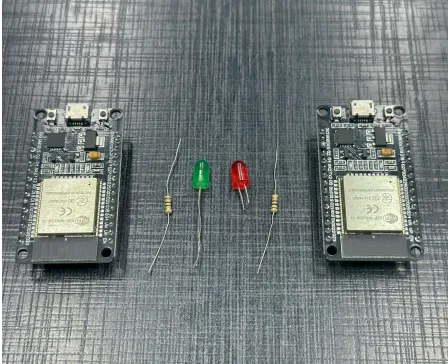
Unify multiple EzloPi Devices with MiOS!
Controlling Multiple EzloPi devices with the MiOS App
The EzloPi smart devices provide automation through simple, customizable use with our open-source EzloPi platform, making daily life easier and improving human-machine interactions.
Before moving into this example, it is very important to know about the device registration, provisioning and converting the ESP32 device into an EzloPi device along with knowledge of Web Flasher, MiOS Mobile Application for Android/iOS and the MiOS Web Application.
1. About this example
The following project demonstrates how to interface two different EzloPi devices with the MiOS application.
In this project, we have interfaced two LEDs with two respective EzloPi devices and control these LED’s remotely. The project is to showcase one of the many capabilities and features of the EzloPi platform. We can also use various sensors and devices in place of the LED’s used. By interfacing multiple ESP32s, we can increase the number of I/O’s being utilized which consequently increases our capability to interface several sensors and devices.
2. Project Video Demonstration
3. Circuit Setup & Interfacing
The following components are required for interfacing with the EzloPi device:
- ESP32 as an EzloPi smart device.
- LED Light with a current-limiting resistor (100 ohms).
The wiring diagram of ESP32 30 pin is represented as follows:
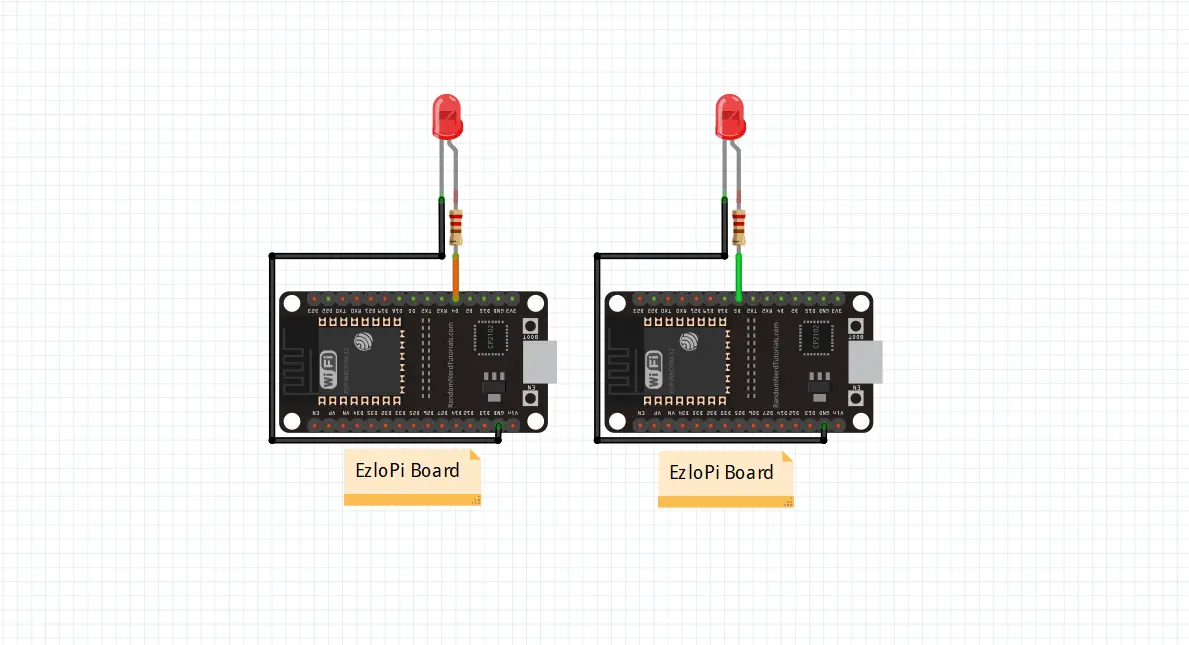
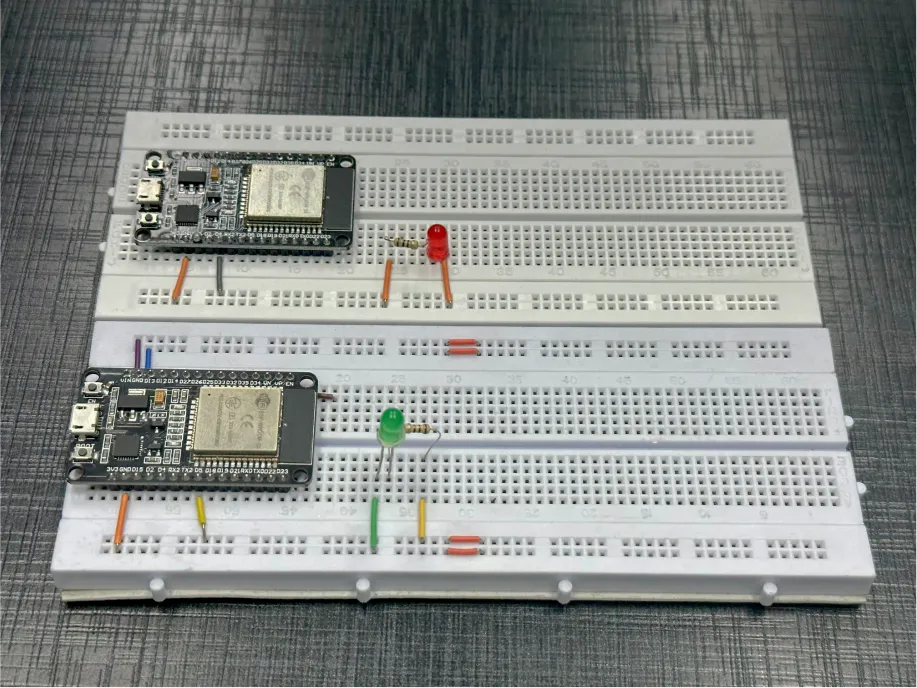
The following connections are made in order to complete the entire circuit setup.
From ESP32 to the LED:
- Connect the shorter leg (cathode) of the LEDs to the GND pin of the ESP32.
- Connect the longer leg (anode) of the LED via a current limiting resistor as shown in the diagram above to the IO4 pin of the first ESP32 and the IO5 pin to the second ESP32.
4. Interfacing the LED with ESP32 using EzloPi Web Flasher
1. Set up your device/hardware by visiting config.ezlopi.com
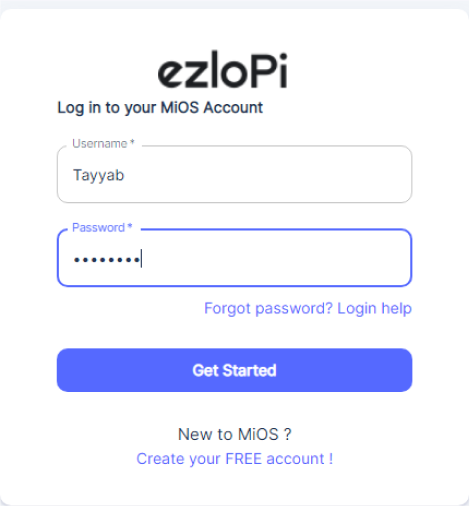
- Log in using the credentials that you just set earlier while signing up.
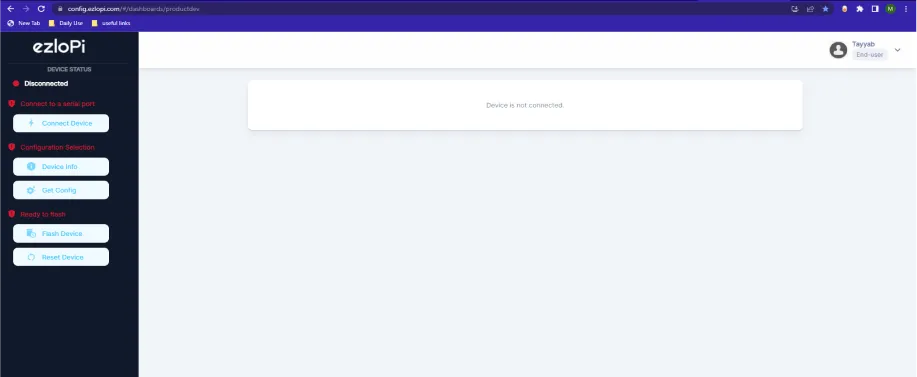
- Now, click on the Connect Device button and a pop-up window will appear.
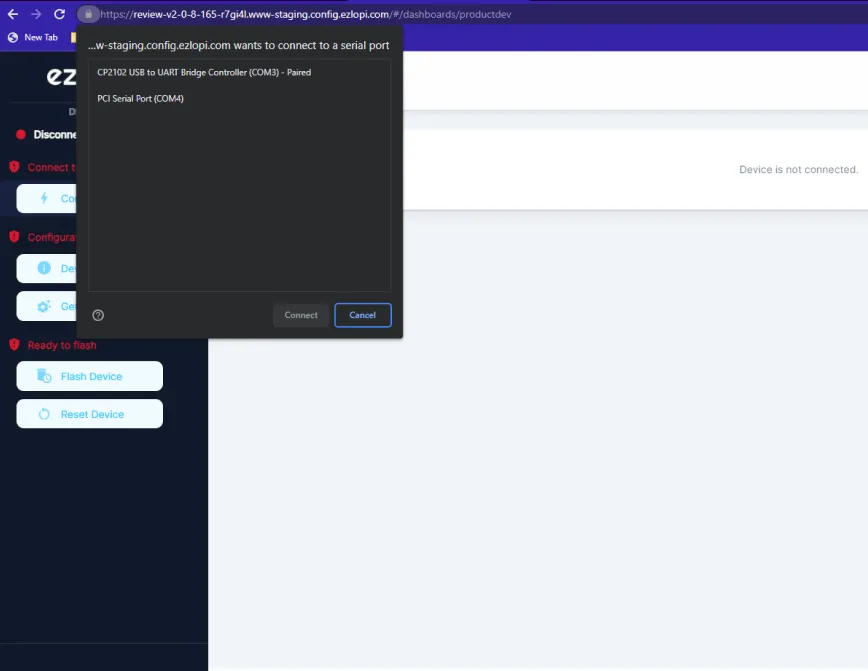
Now, select the COM Port to which your ESP32 device is connected. In our case, the COM3 port is used.
Click Connect.
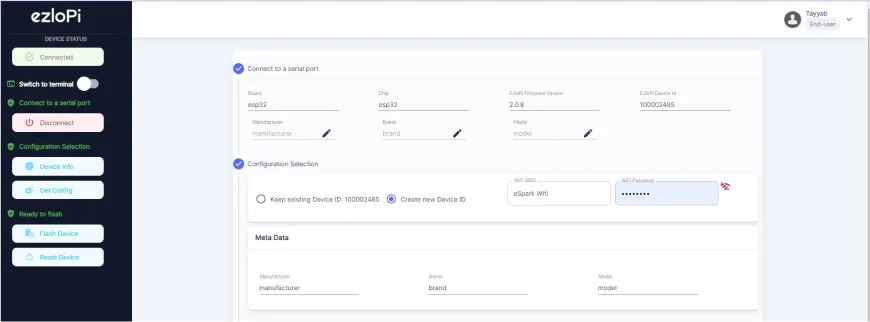
- If you are new to this and it's your first time configuring, select Create new Device ID. Enter Wifi SSID and Wifi Password.
Interfacing the LED to First ESP32 using the EzloPi Web Flasher:
- In the Device Configuration, tab click on Analog Input.
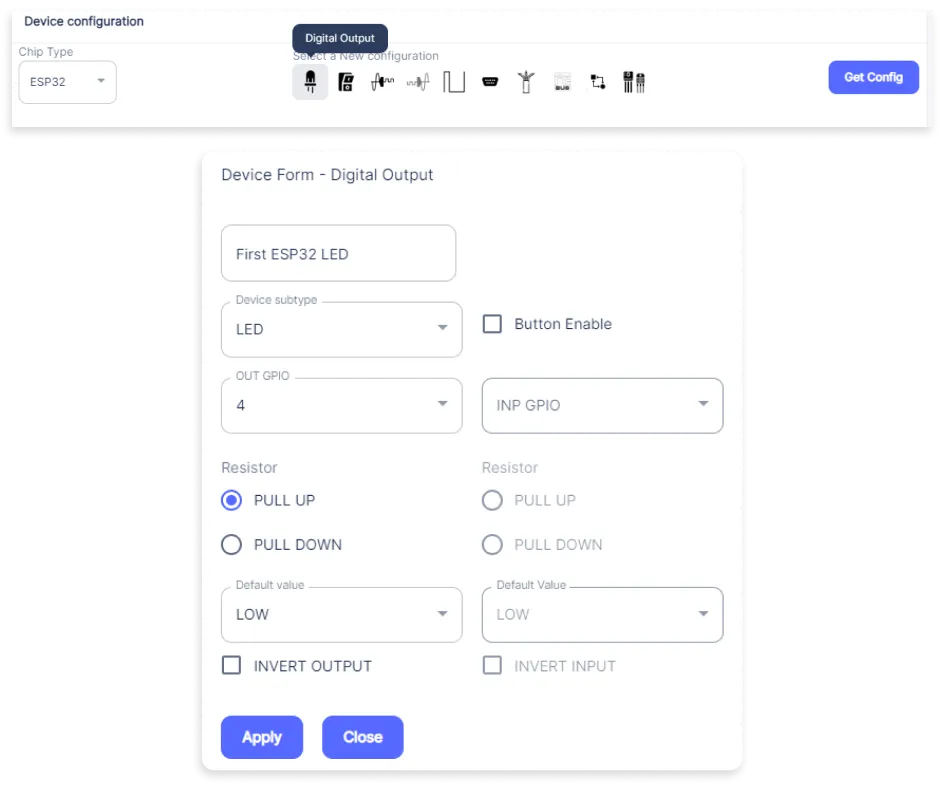
- A Digital Output window will open for inputting the following parameters:
- Set a Device Name of your choosing. In our case, we set it to First ESP32 LED.
- Set Device Subtype to LED.
- Set the _GPIO to 4.
- Set resistor pullup.
- Set Default value LOW.
- Now Click the Apply button.
- After clicking the apply button you can see a table of your settings in the device configuration tab.
- Press the Flash Device button.
- A window will appear on the bottom right side of the screen displaying “Please press BOOT button while flashing begins.”
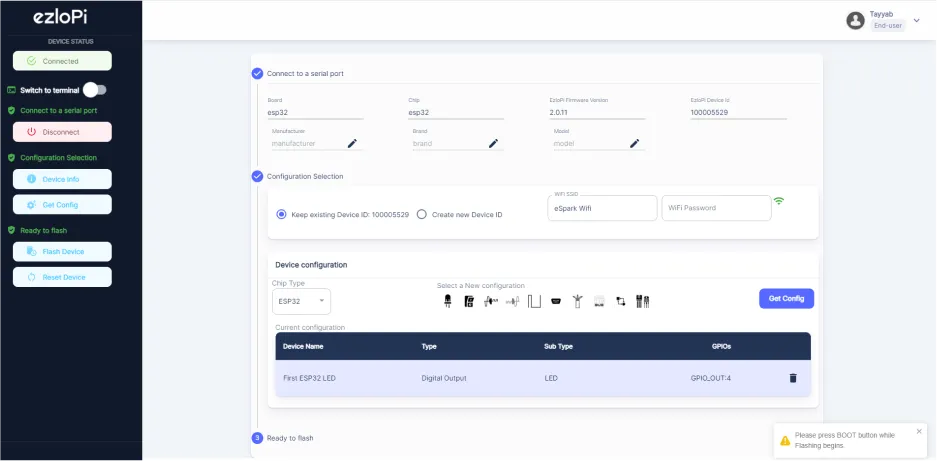
- Hold the BOOT button down until the next window appears on the bottom right side of the screen which says “Installation prepared. Please release the boot button now.”
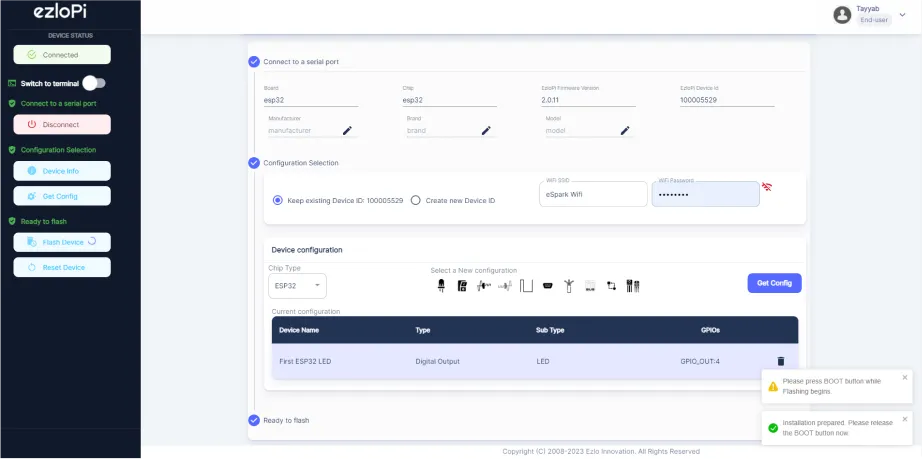
- Release the BOOT button from your ESP32 when this pop-up on the bottom right window appears.
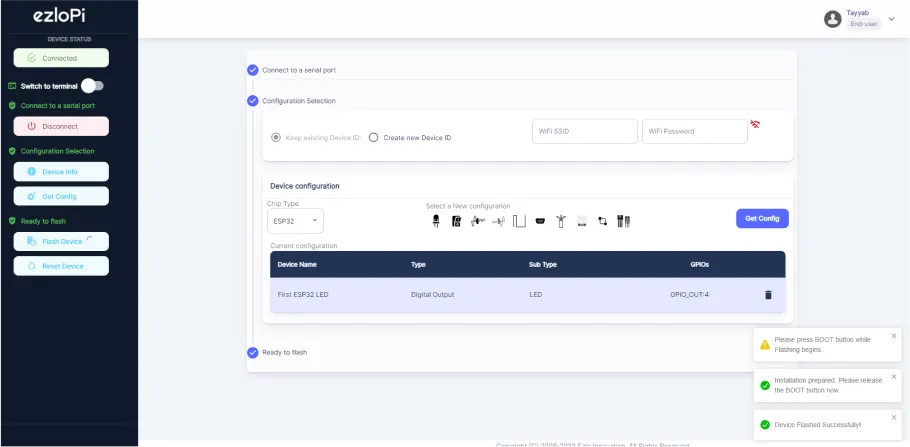
- After some time, a popup will appear saying Device Flashed Successfully! This means that your device has been set up successfully.
Interfacing the LED to the second ESP32 using the EzloPi Web Flasher:
- In the Device Configuration, tab click on Analog Input.
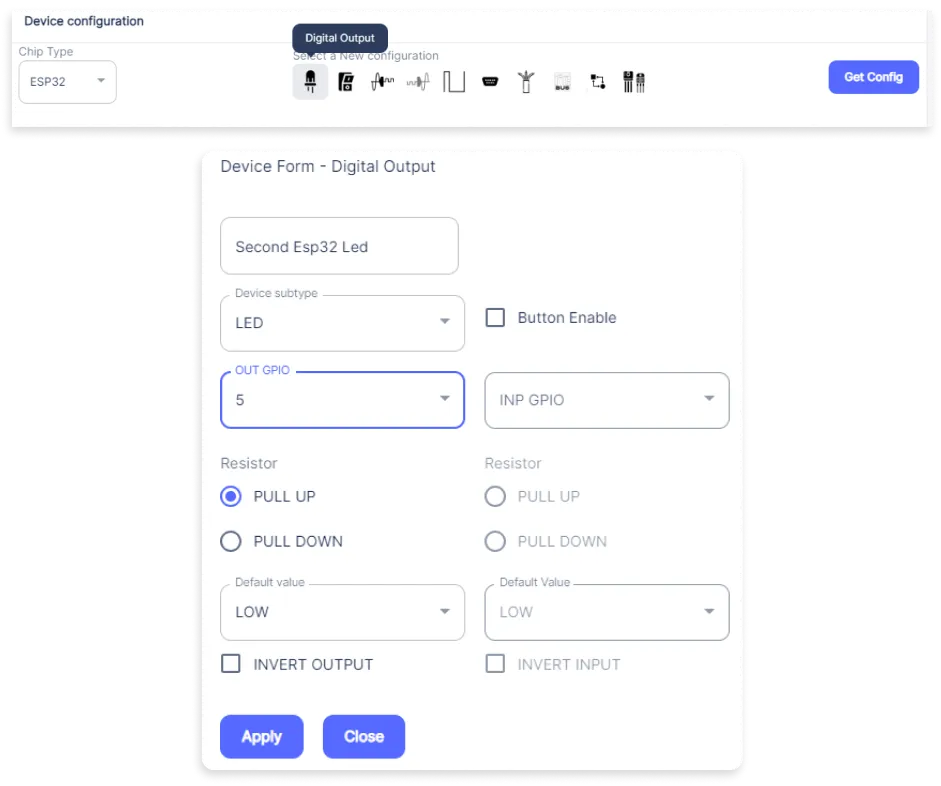
- A Digital Output window will open for inputting the following parameters:
- Set a Device Name of your choosing. In our case, we set it to Second ESP32 LED.
- Set Device Subtype to LED.
- Set the _GPIO to 5.
- Set resistor pullup.
- Set Default value LOW.
- Now Click the Apply button.
- After clicking the apply button you can see a table of your setting in the device configuration tab.
- Press the Flash Device button.
- A window will appear on the bottom right side of the screen displaying “Please press BOOT button while flashing begins.”
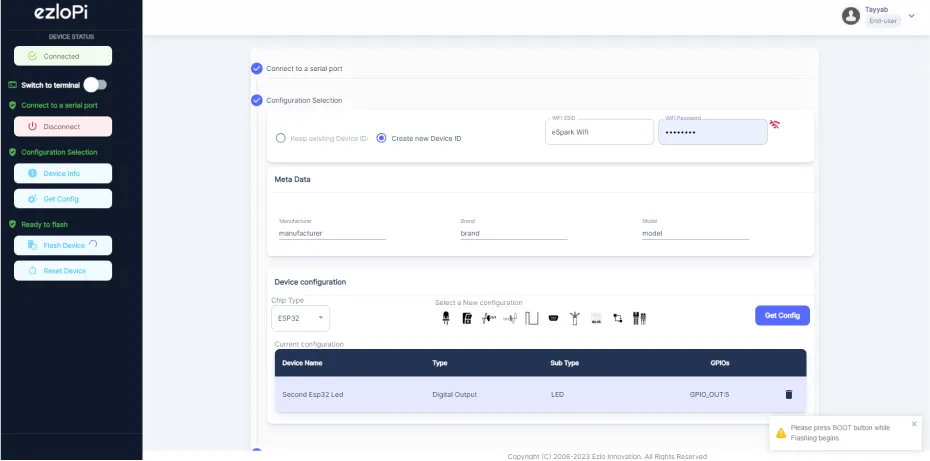
- Hold the BOOT button down until the next window appears on the bottom right side of the screen which says “Installation prepared. Please release the boot button now.”
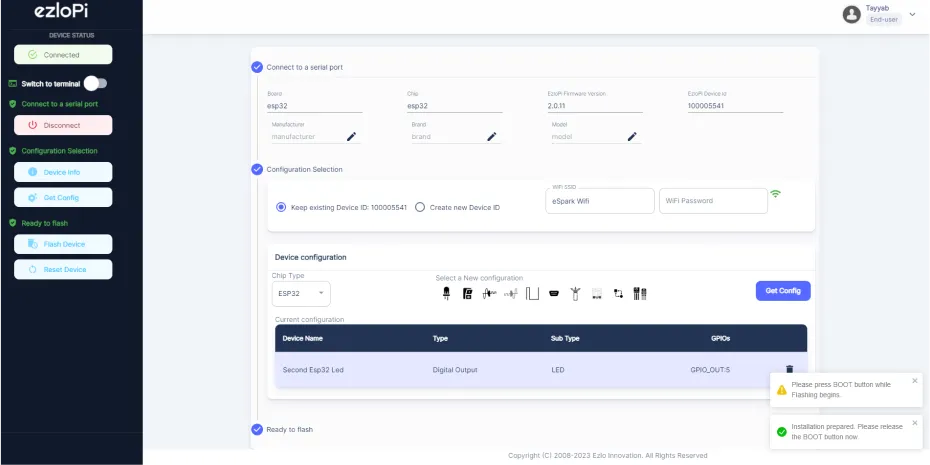
- Release the BOOT button from your ESP32 when this pop-up on the bottom right window appears.
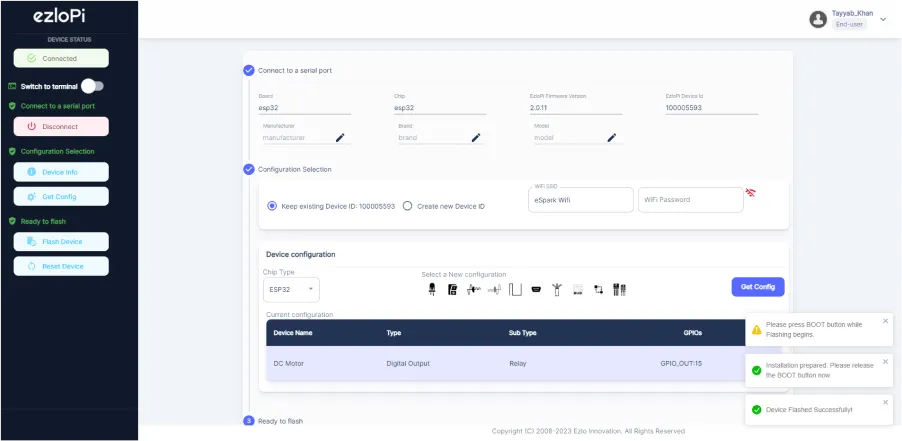
- After some time, a popup will appear saying Device Flashed Successfully! This means that your device has been set up successfully.
5. MiOS App
You can download the MIOS Android app from the Google Play Store and Apple App Store.
- After downloading the app, proceed to install the application and open it.
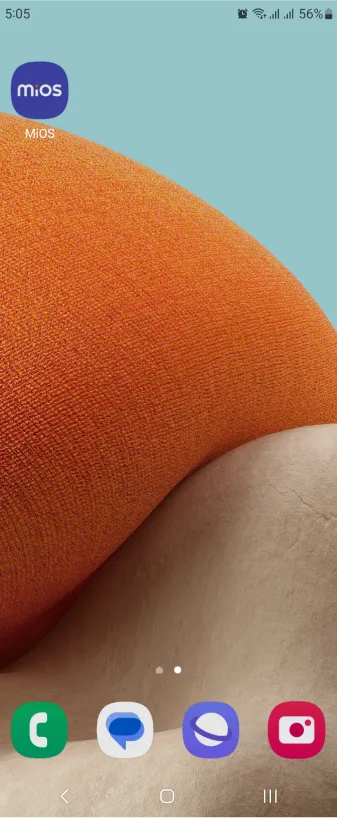
- Using the MIOS mobile application, create a new Ezlo Cloud account using the sign-up option. If you already have an account, you may proceed to log in.
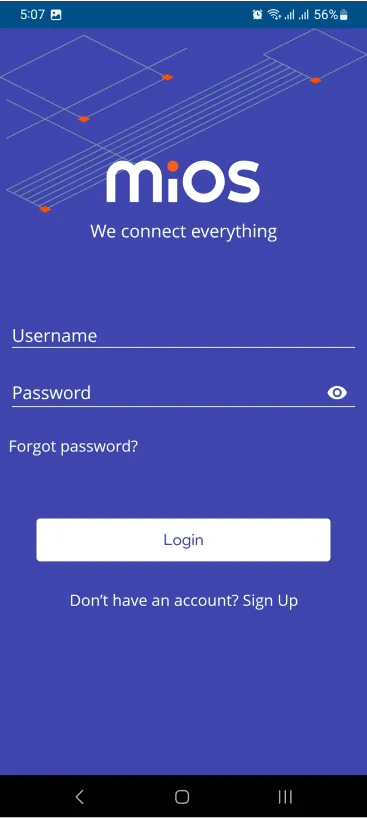
- After successfully logging in, you will be able to see the number of controllers connected such as a lamp, fan, or any other device in the MiOS app. Tap on any controller of your desired ID:
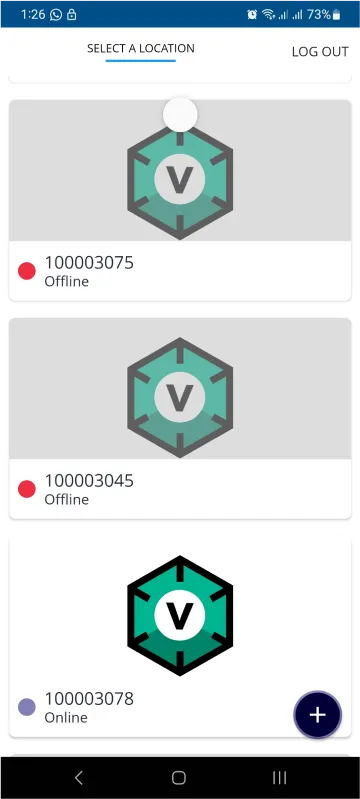
- You will be able to see the status of your controller whether it is online or offline. Access the device dashboard, and tap the device. The following view of the dashboard will appear:
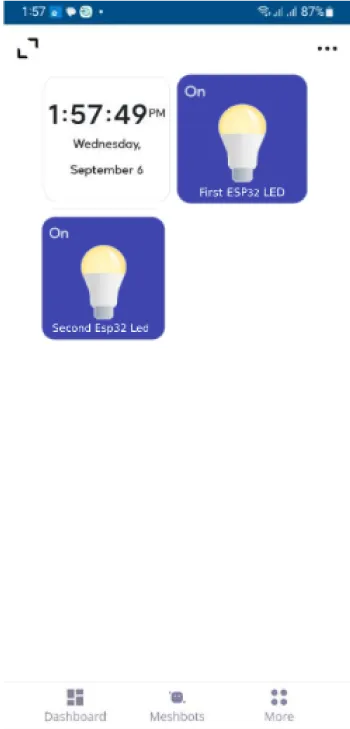
- After opening the MiOS mobile dashboard, you will be able to see the tile of your connected device.
- Here as you can see above, we can see the LED tiles. When we tap on it, the LED can be switched ON or OFF and vice versa for both the EzloPi devices. This shows how we can interface multiple EzloPi devices with the MiOS app and control various devices and sensors at a time.
6. MiOS Web Application
- After configuring the controller with the EzloPi web flasher, head to ezlogic.mios.com
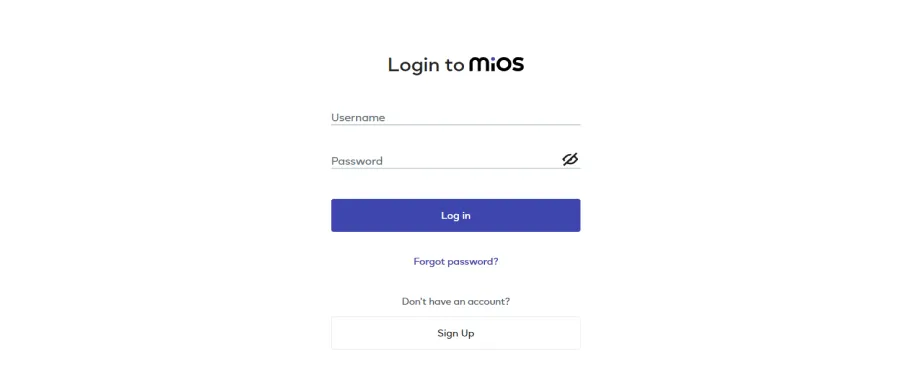
- Use the same credentials to log in that you used for configuring the controller with the web flasher.
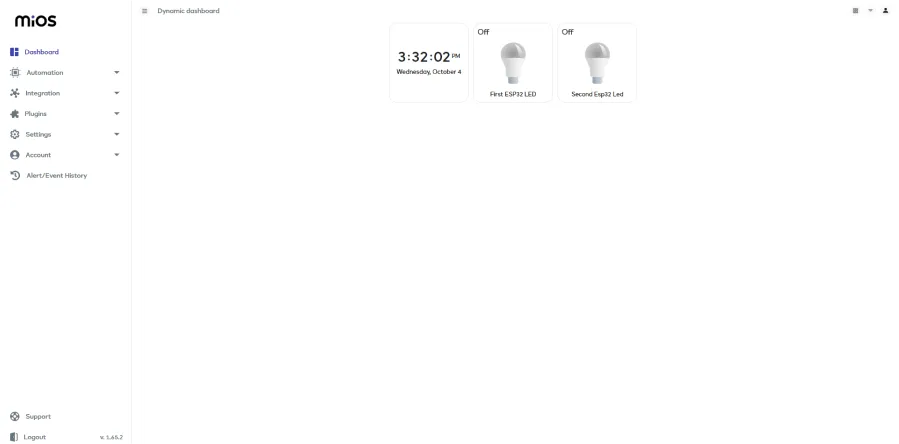
- Here as you can see above, we can see the LED tiles. When we tap on it, the LED can be switched ON or OFF and vice versa for both the EzloPi devices. This shows how we can interface multiple EzloPi deviced with the MiOS app and control various devices and sensors at a time.
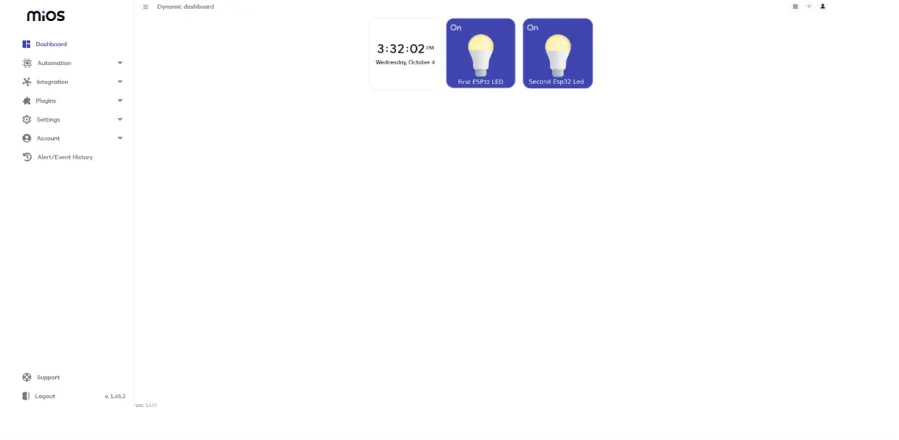
- Similarly, the above figure shows both LED’s switched ON by using the MiOS web app.

eZlopie Products A single-channel 5V relay module $00.00

eZlopie Products Momentary switch $00.00

eZlopie Products Level Shifter Module (BSS138) $00.00

eZlopie Products ESP32
$00.00

eZlopie Products AC Lamp and Holder
$00.00











